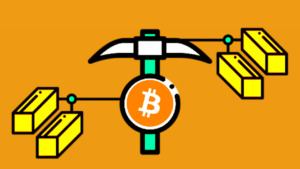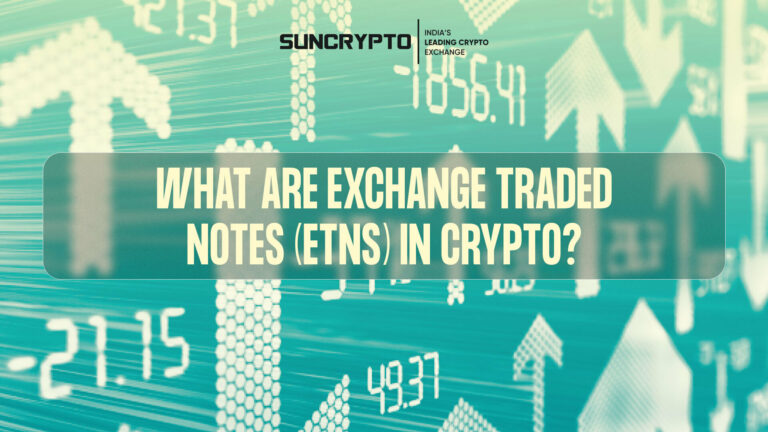You might have heard that miners have to mine blocks for rewards, but did you know there comes a Mining Difficulty with it? One crucial component of the mining process is mining difficulty, which is a measure of how difficult it is to solve the mathematical problem and add a new block to the blockchain.
What is the Mining Difficulty in Blockchain?
In very simple terms, mining difficulty is the degree involved in adding a new block to the blockchain. The hash is a unique code that miners need to solve to add a block to the blockchain. The difficulty level of mining is adjusted regularly by the blockchain network to ensure that the rate at which new blocks are added to the blockchain remains constant. The difficulty level is increased when the network detects that the rate of block creation is too fast, and it is decreased when the rate is too slow. The higher the mining difficulty, the more computing power is required to solve the hash, and the more time it takes to add a new block to the blockchain.

Source: Blockgeeks
The Importance
Mining Difficulty is an essential component of the blockchain network, and it serves several purposes. It ensures that the rate at which new blocks are added to the blockchain remains constant. The difficulty level of mining is adjusted regularly by the blockchain network to ensure that the rate at which new blocks are added to the blockchain remains constant. This is important because it ensures that the blockchain remains secure and stable.
All in all, mining difficulty makes it more challenging for hackers to conduct malicious attacks on the network. The higher the mining difficulty, the more computing power is required to solve the hash, and the more time it takes to add a new block to the blockchain. This makes it more difficult for hackers to gain control of the network and launch an attack.
Adjusting Mining Difficulty
The calculation and adjustment of difficulty varies depending on the blockchain network.
The network sets a target time for adding a new block to the blockchain. For example, Bitcoin’s target time is 10 minutes. The network also measures the time it takes to add a certain number of blocks to the blockchain. For example, Bitcoin measures the time it takes to add 2016 blocks. If the time it takes to add the blocks is less than the target time, the network increases the mining difficulty. If the time is more than the target time, the network decreases the mining difficulty.
The 2016-block interval is used because it provides a good balance between responsiveness to changes in the network’s computing power and stability in the mining difficulty level. If the interval were shorter, the difficulty level would fluctuate too much. Making it difficult for miners to predict their earnings. If the interval were longer, the difficulty level would not respond quickly enough to changes in the network’s computing power and could lead to security issues. The two weeks was chosen because it is long enough to provide a stable mining difficulty level, but short enough to respond quickly to changes in the network’s computing power.
Additionally, the process ensures that the rate at which new blocks are added to the blockchain remains constant. The higher the mining difficulty, the more computing power is required to solve the hash, and the more time it takes to add a new block to the blockchain. This ensures that the blockchain remains secure and stable.
Benefits of Regular Block Addition
Mining difficulty is a crucial component of the blockchain network. It ensures the network remains secure, stable, and fair to all miners. Here are some benefits of mining difficulty:
- Security: The higher the difficulty, the more secure the network becomes. This is because it becomes more difficult for hackers to gain control of the network and launch an attack.
- Stability: ensures that the rate at which new blocks are added to the blockchain remains constant. Hence, helps to maintain the stability of the network and prevent fluctuations in the rate of block generation.
- Fairness: ensures that all miners have an equal chance of earning rewards. This is because the difficulty level adjusts based on the total computing power in the network. Also, no single miner can dominate the network.
- Predictability: it is predictable and transparent, helping miners anticipate changes in difficulty level and adjust their strategies accordingly.
- Inflation control: it helps to control the rate of inflation in the network. This is because the difficulty level adjusts. It is based on the rate at which new blocks are added to the blockchain, which helps to ensure that the rate of new coin creation remains constant.
Conclusion
Mining difficulty plays a vital role in maintaining the regularity of block addition in a blockchain network. By adjusting the difficulty level based on the time taken to mine a specific number of blocks, the network aims to achieve a consistent block discovery rate. This mechanism ensures the stability of the system, enhances security, and provides an equitable incentive structure for miners. Understanding it is crucial for comprehending the dynamics of blockchain networks and the mechanisms that govern their operation.
To know more about Mining Difficulty, go check out SunCrypto Academy.
Disclaimer: Crypto products and NFTs are unregulated and can be highly risky. There may be no regulatory recourse for any loss from such transactions. The content provided is for informational purposes only and should not be relied upon as financial/investment advice. We share opinions, if any, solely for information and education purposes. Although we have made the best efforts to ensure the accuracy and currency of all information, unintended errors or misprints may occasionally occur. We recommend you to please do your own research or consult an expert before making any investment decision. You may write to us at [email protected].






I am suncrypto user